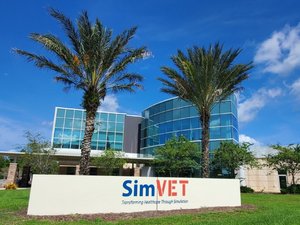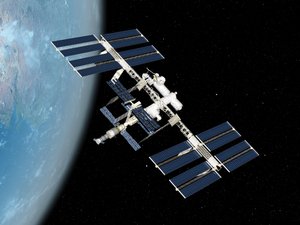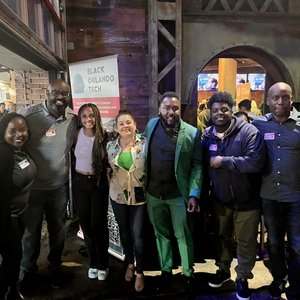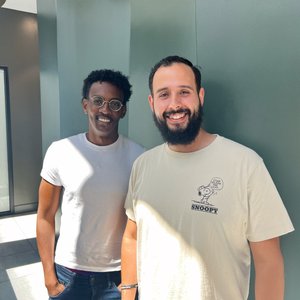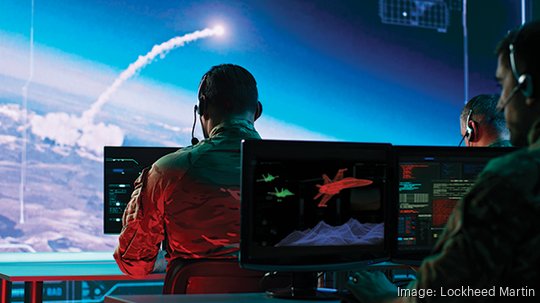
On Oct. 9, Northrop Grumman Corp. (NYSE: NOC) announced that a defense management platform it developed — Integrated Battle Command System — had helped defend the nation’s capital against a cruise missile and a compromised aircraft in a risk-free simulated environment where it could be tested and warfighters could be trained.
The $1.4 billion contract from 2021 associated with this project wasn't exclusively for the simulation activity — yet without simulation technology, the work couldn't have been done.
The same is true for another contract Northrop Grumman won in 2022. This one was for a maximum of $3.29 billion to update a product called the Ground-based Midcourse Defense Weapon System.
CEO George Cheros of the National Center for Simulation in Orlando explained that big companies such as Lockheed Martin Corporation (NYSE: LMT) and Northrop are called "original equipment manufacturers," and much of the simulation work they do supports the products they make.
There's a steady flow of Department of Defense contracts for the big tech companies playing in the defense arena. Advanced Avionics Program Manager Zak Upshaw of Northrop Grumman said because of the DoD's ongoing digital transformation, often the contracts specify that programs "start digital" — built on a digital foundation that includes simulation technology.
Usually, the work associated with these contracts is shared between a company's various locations, and all the companies named here have a Central Florida presence.
In August, the DoD announced that Leidos Holdings Inc. (NYSE: LDOS) had won a 10-year Army contract for $7.9 billion for hardware systems, system management solutions and other products and services. Simulation technology will factor into development, engineering and testing.
In September, the Department of Defense (DoD) announced a $280 million contract for Collins Aerospace (NYSE: COL) that includes products and services for the Navy, Marine Corps, Army, Coast Guard, other DoD agencies and foreign military sales customers. Again, simulation technology is part of the deal.
Lockheed Martin won a $1.2 billion contract announced Sept. 29, and 22.5% of the work will be performed in Titusville, though how much of that is simulation development can't be determined externally. But because "missile production and deployed systems support" are part of the scope of the contract, that certainly means simulation activity will be involved as simulation in some form is part and parcel to digital development and engineering.
The same day, the DoD announced a contract for L3 Harris Technologies Inc. (NYSE: LHX) for about $37 million for testing systems support, where simulation technology plays a role.
Visit Orlando data also shows that in Orlando alone, there are 26,300 employees in the simulation sector, $744 million in annual payroll and 230 companies that develop simulations as well as other tech products and services.
While it's rare for a contractor to reveal details about its simulation development activities, it happens occasionally. Lockheed Martin announced in a news feature on its website on Oct. 5 that it will use its internally developed digital-twin tool Advanced Rapid Integration Simulation Environment (ARISE) across all new Missiles & Fire Control projects as well as some legacy projects. Lockheed's Missiles & Fire Control division is based in Orlando.
An aggregation website that pulls from public records, governmentcontractswon.com, shows that from 2000 to 2020, Orlando businesses made $79 trillion from government defense contracts. The simulation sector's share of that number isn't clear. While the Visit Orlando website states that "over $4 billion in simulation contracts flow through the region annually," Cheros said it's likely a much bigger number every year, though the exact number is hard to determine since at this point, simulation is baked into digital development for new DoD programs.
Why Orlando attracts simulation work
A cluster of military offices at Central Florida Tech Grove near the University of Central Florida helps make Orlando a hot spot for the simulation industry. The area was developed specifically to support the Department of Defense with modeling, simulation and training solutions, drawing on commercial businesses in the region for innovations funded by DoD contracts. Commercial simulation businesses aim for proximity to these offices, said Cheros, and it's becoming common for companies headquartered elsewhere to add an office in the Tech Grove area.
For more stories like this one, sign up here for Orlando Inno newsletters from the Orlando Business Journal and the American Inno network. And be sure to follow us on LinkedIn, Facebook and X (formerly known as Twitter).


